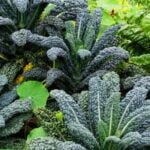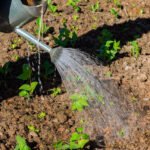Are ashes good for vegetable gardens? This question has lingered in the minds of many gardeners seeking natural ways to enhance their plant growth. Surprisingly, ashes can indeed be beneficial for vegetable gardens, offering numerous advantages. In this article, we will explore the concept of using ashes in vegetable gardens and delve into the benefits they provide.
When it comes to gardening, it is essential to understand the composition of any substance before incorporating it into your soil. Ashes are no exception. Highlighting different elements and nutrients present in ashes that make them beneficial for vegetable gardens is an important step towards optimizing their potential.
One crucial aspect of using ashes in vegetable gardens is their role in soil pH balance. By applying ashes, gardeners can help counteract acidic soil, creating a more favorable environment for their vegetables to thrive. Additionally, ashes contribute specific nutrients to the soil that have a positive impact on vegetable growth.
In the following sections of this article, we will further discuss the nutrient enrichment and benefits provided by ashes in detail, as well as recommendations for ash application and potential risks or precautions to consider when introducing them into your garden. We will also explore case studies and success stories from experienced gardeners who have effectively used ashes in their own vegetable gardens. Lastly, we will touch upon alternative uses for ashes in gardening beyond simply adding them to soil.
Overall, understanding why and how ashes can benefit your vegetable garden is crucial for achieving optimal growth and yield. So, let’s dive deeper into this topic to unleash the full potential of using ashes as a valuable resource in your gardening endeavors.
Understanding the Composition of Ashes
Ashes, the residue left behind after burning organic material, may seem like waste to many, but they can actually be a valuable resource for vegetable gardens. Understanding the composition of ashes is crucial to fully grasp their potential benefits. Ashes consist of various elements and nutrients that can enrich the soil and promote healthy plant growth.
Mineral Content
One of the primary components of ashes is minerals. These minerals include essential elements such as potassium, phosphorus, calcium, and magnesium. Potassium plays a significant role in promoting fruit development and overall plant vigor. Phosphorus aids in root development and flowering. Calcium contributes to cell walls and promotes disease resistance, while magnesium assists in chlorophyll production.
The mineral content present in ashes varies depending on what was burned. For example, wood ashes typically have higher potassium content compared to other types of ashes. It’s crucial to check the source material before using ashes in your vegetable garden so that you’re aware of the nutrient profile you’re adding to the soil.
Micro-Elements
In addition to minerals, ashes also contain micro-elements or trace elements that are essential for plant growth but required in smaller quantities. These include iron, manganese, zinc, copper, boron, and molybdenum. Despite their lower concentration compared to minerals, these trace elements play vital roles in enzyme activation and metabolic processes within plants.
Alkalinity
Another characteristic of ashes is their alkaline nature due to the presence of calcium carbonate (lime). This alkalinity can help neutralize acidic soils, which is beneficial for vegetable gardens as most vegetables prefer slightly acidic to neutral pH levels. However, it’s important to note that excessive use of ashes can lead to an overly alkaline environment that may negatively impact plant growth.
Understanding the composition of ashes provides insight into why they are beneficial for vegetable gardens. The minerals and micro-elements present in ashes contribute to the overall nutrient profile of the soil, promoting healthy plant growth. Furthermore, the alkalinity of ashes can help balance soil pH levels. However, it’s essential to assess the specific nutrient needs of your vegetables and monitor soil pH levels to prevent imbalances that could impede their growth.
The Role of Ashes in Soil pH
Maintaining the proper soil pH is crucial for successful vegetable gardening. When the soil’s acidity levels are too high or too low, it can hinder nutrient availability and affect plant growth. However, incorporating ashes into your vegetable garden can be an effective way to balance soil pH and create a favorable environment for vegetable growth.
Ashes can play a significant role in regulating soil pH due to their alkaline properties. Ashes contain high levels of calcium carbonate that act as a natural liming agent, neutralizing acidic soils. Additionally, the presence of potassium in ashes further helps in maintaining optimal pH levels.
To utilize ashes for balancing soil pH, start by conducting a soil test to determine its current acidity levels. Testing kits are readily available at most garden centers and can provide precise measurements of the pH value. Once you identify the need for adjusting soil acidity, ash application can be beneficial.
Here is a step-by-step guide on how to apply ashes for regulating soil pH:
- Calculate the amount of ash needed: Referencing your soil test results, determine how much ash is required to raise the pH level to the desired range. Be cautious not to exceed recommended amounts, as excessive use of ashes can lead to nutrient imbalances.
- Apply at the right time: The best time to apply ashes is during the fall or winter months before planting vegetables. This allows sufficient time for the ashes’ properties to interact with the soil and adjust its composition before spring planting.
- Spread evenly over the garden area: Distribute the calculated amount of ash evenly across your vegetable garden using a rake or similar tool. Ensure thorough coverage while avoiding concentrated application in one specific area.
- Incorporate into the topsoil: Gently work the ashes into the topsoil using a tiller or garden fork until they are thoroughly mixed in, typically about six inches deep.
- Monitor soil pH: Regularly monitor the pH levels after applying ashes to keep track of any fluctuations. Adjustments may be necessary in subsequent years to maintain optimal pH for vegetable growth.
Nutrient Enrichment
Ashes are a rich source of various nutrients that can greatly benefit vegetable gardens. When plants grow, they extract essential minerals from the soil, depleting its nutrient content over time. By incorporating ashes into the soil, gardeners can replenish these nutrients, ensuring healthy and vigorous growth of their vegetables.
Potassium
One of the primary nutrients found in ashes is potassium. This element plays a crucial role in promoting overall plant health and vigor. It aids in photosynthesis, enzyme activation, and water regulation within plants. Additionally, potassium enhances fruit quality by improving color, taste, and size. Vegetable plants require potassium for optimal root development and improved resistance to pests, diseases, and environmental stresses.
Calcium
Calcium is another essential nutrient supplied by ashes. It enhances cell wall strength and structure, contributing to healthier stems and leaves in vegetable plants. Adequate calcium levels also improve the plant’s ability to uptake other important elements like nitrogen and phosphorus from the soil. This nutrient is particularly beneficial for preventing common disorders such as blossom end rot in tomatoes and peppers.
Trace Elements
Ashes also contain trace elements that are vital for plant growth but are often deficient in soil. These include manganese (Mn), copper (Cu), zinc (Zn), iron (Fe), boron (B), and molybdenum (Mo). Even though these elements are required in small amounts, their presence is crucial for overall plant metabolism, enzyme function, chlorophyll synthesis, and disease prevention.
When these nutrients are added to the soil through ashes, they work synergistically to support robust vegetative growth and maximize crop yields.
Recommendations for Ash Application
When it comes to applying ashes to vegetable gardens, it’s important to follow the proper guidelines to ensure optimal results. Here are some recommendations for ash application:
- Determine the proper amount: The amount of ashes to use in your vegetable garden depends on several factors, including the size of your garden and the current pH levels of your soil. As a general guideline, you can apply ashes at a rate of 20 pounds per 1,000 square feet of garden space.
However, it’s essential to test your soil’s pH level before applying ashes. If your soil is already alkaline or has a high pH level, you may not need additional ash application. - Apply at the right time: Timing is crucial when adding ashes to your vegetable garden. It’s best to apply them during spring or fall when you’re preparing your garden beds for planting. Avoid adding ashes too close to planting time as their high alkaline content can potentially burn seedlings or young plants.
- Spread evenly and incorporate into the soil: When applying ashes, it’s important to spread them evenly across your vegetable garden. Use a rake or similar tool to lightly incorporate them into the top layer of soil. This will ensure that the nutrients from the ashes are distributed evenly and can be readily available for plant uptake.
It’s worth noting that while ashes can benefit vegetable gardens, they should be used in moderation. Excessive amounts of ashes can raise the pH level too much and disrupt the nutrient balance in the soil, leading to nutrient deficiencies in plants.
Overall, by following these recommended guidelines for ash application in vegetable gardens, you can create a favorable environment for plant growth and maximize the benefits provided by ashes.
Potential Risks and Precautions
Using ashes in vegetable gardens can provide numerous benefits, but it is important to be aware of the potential risks and take necessary precautions when incorporating them into the soil. While ashes can contribute important nutrients and help balance soil pH, there are a few considerations to keep in mind.
One potential risk of using ashes is their high alkalinity. Wood ashes tend to have a pH level around 10, which can significantly raise the pH of acidic soils.
This alkaline nature of ashes can affect the availability of certain nutrients in the soil, making them less accessible to plants. It is crucial to monitor the pH levels of your soil before adding ashes and conduct regular soil testing throughout the growing season to ensure that the pH remains within an optimal range for vegetable growth.
To mitigate any potential risks associated with using ashes, it is best to apply them sparingly and gradually over time. Start by applying a thin layer of ashes to your garden beds and thoroughly mix them into the topsoil. It is advisable not to exceed a maximum application rate of 20 pounds per 1,000 square feet per year. Applying too much ash at once can overwhelm the soil with excessive nutrients and alter its nutrient balance.
Another precautionary measure to take when using ashes in vegetable gardens is ensuring that they come from a clean source. Avoid using ashes from wood treated with chemicals or painted wood, as these may contain harmful substances that can be detrimental to plant health and human consumption.
In summary, while using ashes in vegetable gardens can be beneficial, it is crucial to exercise caution and follow certain precautions. Regular monitoring of soil pH levels, applying ash in moderation, and sourcing clean ashes are essential practices for successful incorporation into your garden beds.
| Potential Risks | Precautions |
|---|---|
| High alkalinity: Can raise soil pH | Monitor soil pH levels before adding ashes and conduct regular soil testing throughout the growing season. Apply ashes sparingly and gradually over time. |
| Possible nutrient imbalance | Apply ash in moderation, avoiding excessive application rates. Regularly monitor nutrient levels in the soil to ensure a balanced nutrient profile. |
| Contaminated ashes | Use ashes only from clean sources, avoiding wood treated with chemicals or painted wood. |
Case Studies and Success Stories
Case Studies and Success Stories:
Throughout the years, many gardeners have shared their success stories and experiences of using ashes in their vegetable gardens. These case studies provide valuable insights into the benefits of using ashes as a soil amendment and how it can contribute to the overall health and productivity of vegetable plants.
One such success story comes from Martha, an avid gardener from Ohio. She had been struggling with a persistent problem of low soil pH in her vegetable garden, which was affecting the growth and yield of her plants. After doing some research, Martha decided to try adding wood ash to her soil to raise its pH level.
She carefully followed the recommendations for ash application and was delighted with the results. Not only did the ashes help to balance the pH levels in her garden, but she also noticed an improvement in plant growth and vigor. Her tomatoes were larger, her peppers were more abundant, and her leafy greens were healthier than ever before.
Another remarkable case study comes from Joe, a backyard gardener in California. Joe had been battling with heavy clay soil in his vegetable patch, which was causing drainage problems and stunting plant growth. Determined to find a solution, he learned about the positive effects of adding ashes to clay soils. Joe incorporated wood ash into his garden beds during the fall season when he wasn’t actively growing vegetables.
The following spring, he noticed a remarkable difference in his garden’s performance. The addition of ashes had improved soil structure by breaking up compacted clay particles and enhancing drainage. As a result, his vegetables thrived in well-draining soil conditions.
These success stories highlight the transformative power of using ashes in vegetable gardens. Gardeners like Martha and Joe not only saw improvements in plant growth but also experienced increased yields and overall garden vitality by incorporating ashes into their gardening practices.
| Benefits | Examples |
|---|---|
| Balanced pH levels | Martha noticed improved plant growth and vigor after balancing the soil pH in her garden. |
| Improved soil structure and drainage | Joe witnessed enhanced soil structure and drainage, leading to healthier plants in his clayey vegetable patch. |
| Increase in yields | Both Martha and Joe experienced higher yields of vegetables compared to previous years after incorporating ashes into their gardens. |
These case studies serve as inspiring examples for gardeners who may be considering using ashes in their vegetable gardens. As always, it is important to carefully follow the recommended application guidelines and monitor the effects on your specific garden conditions.
Alternative Uses for Ashes
While using ashes directly in vegetable gardens can provide a range of benefits, there are also alternative uses for ashes that can enhance your gardening experience. One alternative use is incorporating ashes into composting. Compost is a valuable organic matter that enriches the soil and promotes healthy plant growth. By adding ashes to your compost pile, you can further increase its nutrient content and improve the overall quality of your garden soil.
When using ashes in composting, it’s important to remember a few key guidelines. First, avoid adding large quantities of ashes at once as they can be very alkaline and potentially disrupt the pH balance of the compost pile. Instead, sprinkle a thin layer of ash over each layer of organic material in your compost pile. This will ensure that the ashes are evenly distributed and properly incorporated into the mixture.
In addition to enriching compost, ashes can also be used to create natural insect repellents for your vegetable garden. Wood ash contains potassium salts which act as a deterrent against pests like slugs and snails. To make a simple ash-based insect repellent, mix wood ash with water until it forms a paste-like consistency.
Apply this mixture around the base of your plants or on any areas where pests tend to congregate. The abrasive texture of the ash will help deter these unwanted garden visitors while providing a natural solution that is safe for both your plants and the environment.
Conclusion
In conclusion, the use of ashes in vegetable gardens can provide numerous benefits for successful crop growth. As discussed throughout this article, ashes are composed of various elements and nutrients that contribute to soil enrichment. They help balance soil pH levels and provide essential nutrients such as calcium, potassium, and phosphorus. By following proper guidelines for ash application, gardeners can ensure optimal results.
Using ashes in vegetable gardens is not without potential risks and precautions. It is important to be aware of the possibility of raising soil pH levels too high or introducing harmful substances into the soil through ash application. However, by taking necessary precautions such as testing soil pH before applying ashes and using them judiciously, gardeners can mitigate these risks.
Real-life examples and success stories shared in this article highlight the positive outcomes that many gardeners have experienced when using ashes in their vegetable gardens. The nutrient enrichment provided by ashes has resulted in healthier plants with better yields.
Furthermore, there are alternative creative uses for ashes in gardening beyond simply adding them directly to the soil. Composting with ashes or using them as a natural insect repellent are additional ways to utilize this resource effectively.
Frequently Asked Questions
Which vegetables do not like wood ash?
Some vegetables do not like wood ash due to the high alkalinity it adds to the soil. The alkaline nature of wood ash can disrupt the natural pH balance that certain vegetables require for optimal growth.
Acid-loving plants, such as potatoes, blueberries, and radishes, tend to be negatively affected by wood ashes as their ideal soil pH is more acidic. Adding wood ash to these plants’ growing environment can cause nutrient deficiencies and hinder their overall health and productivity.
What vegetables benefit from ashes?
On the other hand, some vegetables can benefit from the addition of wood ashes in the garden. Plants that prefer slightly alkaline soil or have a greater tolerance for alkalinity can thrive with the application of wood ash.
Vegetables like asparagus, broccoli, cabbage, carrots, and onions often appreciate the boost in potassium and trace minerals provided by wood ashes. These nutrients help promote healthy root development, enhance flowering or fruit production, and improve overall plant vigor.
Should I add wood ashes to vegetable garden?
While there are some vegetables that benefit from wood ashes, it is essential to exercise caution when considering their addition to a vegetable garden. The decision ultimately depends on the chemistry of your soil and the specific needs of your crops. Conducting a soil test is advisable before adding any amendments like wood ash.
This will provide valuable insights into your soil’s current pH levels and nutrient content. If your soil already has a naturally high pH or if you’re growing acid-loving plants mentioned earlier, it’s best to avoid using wood ash in your vegetable garden as it may further elevate the alkalinity levels beyond what they can tolerate. However, if your soil is deficient in potassium or leans towards being acidic without any adverse effects on your desired crops’ growth patterns, incorporating moderate amounts of wood ash can be beneficial for certain vegetables mentioned earlier that thrive under slightly alkaline conditions

If you’re looking to get into vegetable gardening, or are just looking for some tips on how to make your current garden better, then you’ve come to the right place! My name is Ethel and I have been gardening for years. In this blog, I’m going to share with you some of my best tips on how to create a successful vegetable garden.





